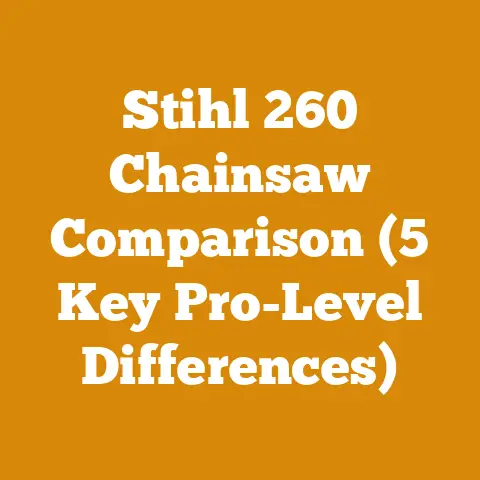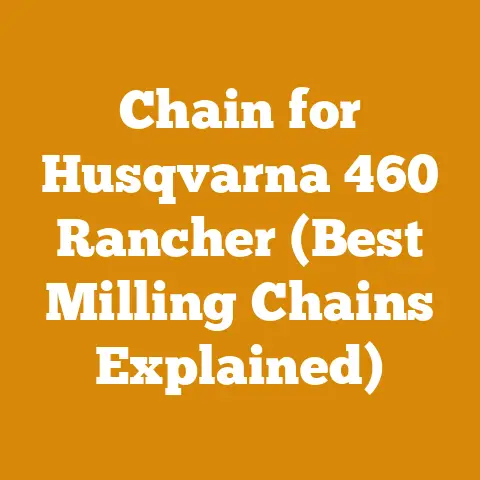Snapper Rototiller Parts Guide (5 Must-Know Repair Tips)
Let’s dive into the world of Snapper rototillers!
Snapper Rototiller Parts Guide (5 Must-Know Repair Tips)
As someone who’s spent a good chunk of my life tinkering with machinery, from revamping old chainsaws to optimizing wood splitters for maximum efficiency, I’ve developed a deep respect for the humble rototiller. It’s the unsung hero of many gardens and small farms, tirelessly churning soil to prepare it for planting. And just like any hardworking machine, a Snapper rototiller will eventually need some TLC. This guide isn’t just about fixing things; it’s about understanding your machine, preventing problems, and getting the most out of your investment.
Understanding Your Snapper Rototiller: A Blending of Styles
Before we jump into repairs, let’s quickly talk about the “blending styles” I see in the world of rototillers. By this, I mean the different ways people approach soil preparation, which ultimately influences how hard they push their machines.
- The Gentle Gardener: This person uses the tiller primarily for light cultivation, incorporating compost, and maintaining existing beds. Their tiller sees less stress, but proper maintenance is still key.
- The Power User: This individual tackles tough, compacted soil, breaking new ground, and dealing with heavy clay. They push their tiller to its limits, requiring more frequent maintenance and careful attention to wear and tear.
- The Occasional Tiller: Only uses the tiller a few times a year in the spring and fall. They might not be as intimate with the machine but still need it to work reliably when called upon.
No matter your style, understanding your tiller’s components and how they work together is crucial. Knowing how different uses can affect the machine and its parts will help you fix it and keep it running smoothly.
1. Diagnosing Engine Troubles: The Heart of the Matter
The engine is the powerhouse of your Snapper rototiller. When it sputters, stalls, or refuses to start, it’s like a tree falling silent in the forest – something’s definitely wrong. Here’s a breakdown of common issues and how to tackle them, drawing on my experiences troubleshooting similar problems with small engines in wood processing equipment.
-
Fuel Issues: This is the most frequent culprit.
- Problem: Stale fuel, clogged fuel filter, or a dirty carburetor.
- Solution: Always start with fresh fuel. Ethanol-blended fuels can cause problems, especially if left sitting for extended periods. I’ve seen firsthand how they gum up carburetors, turning a simple start-up into a major headache. Drain the old fuel, replace the fuel filter (a cheap and easy preventative measure), and clean the carburetor. Carburetor cleaner spray is your friend here, but for stubborn clogs, a complete carburetor rebuild kit might be necessary.
- Technical Note: Ethanol fuels can absorb moisture from the air, leading to phase separation (where the ethanol separates from the gasoline). This phase-separated fuel is corrosive and can damage fuel lines and other engine components. For long-term storage, use fuel stabilizers or, better yet, drain the fuel tank completely.
-
Spark Issues: No spark, no fire!
-
Problem: Faulty spark plug, loose wiring, or a failing ignition coil.
- Solution: Remove the spark plug and inspect it. A fouled plug will be black and oily. Clean it with a wire brush or replace it. Check the spark by grounding the plug against the engine block while pulling the starter cord. You should see a strong, consistent spark. If not, check the wiring to the ignition coil and consider replacing the coil itself.
- Technical Note: The spark plug gap is crucial for proper ignition. Consult your Snapper rototiller’s manual for the correct gap specification. Typically, it’s around 0.030 inches.
-
Compression Issues: The engine needs to compress the fuel-air mixture to ignite it.
-
Problem: Worn piston rings, leaky valves, or a blown head gasket.
- Solution: This is a more serious issue that may require professional help. You can check compression with a compression tester. A healthy engine should have a compression reading within the range specified in the manual (usually around 90-120 PSI). Low compression indicates a problem with the piston rings, valves, or head gasket.
- Technical Note: A “wet compression test” can help diagnose the source of low compression. Add a small amount of oil to the cylinder through the spark plug hole and retest. If the compression increases, it suggests worn piston rings. If it doesn’t, the problem is likely with the valves.
2. Tine Troubles: Digging Deeper into Soil Engagement
The tines are the business end of your rototiller, the part that actually does the work. Keeping them in good condition is essential for efficient tilling.
-
Worn or Damaged Tines:
- Problem: Tines become dull, bent, or broken from hitting rocks or other obstacles.
- Solution: Sharpen dull tines with a grinder or file. Bent tines can sometimes be straightened, but severely damaged tines should be replaced. I’ve seen people try to weld broken tines, but the heat can weaken the metal and lead to further failures. It’s generally better to replace them.
- Technical Note: Tine wear is inevitable, especially in abrasive soils. Regularly inspect your tines and replace them as needed. Using a harder steel for the tines can extend their lifespan, but this may come at a higher cost.
-
Tine Mounting Issues:
-
Problem: Loose or missing tine bolts, damaged tine shafts.
- Solution: Regularly check the tine bolts and tighten them as needed. Use threadlocker to prevent them from loosening. If the tine shafts are damaged, they may need to be replaced.
- Technical Note: When replacing tine shafts, make sure to use the correct replacement parts. Using the wrong parts can lead to further damage and safety hazards.
-
Tine Rotation Problems:
-
Problem: Tines not rotating, rotating slowly, or rotating erratically.
- Solution: Check the drive belt or chain that connects the engine to the tine shaft. A worn or loose belt will slip, causing the tines to rotate slowly or not at all. Replace the belt or chain as needed. Also, check the gearbox that drives the tines. A damaged gearbox can cause erratic tine rotation.
- Technical Note: The drive belt tension is crucial for proper tine rotation. Consult your Snapper rototiller’s manual for the correct belt tension specification.
3. Drive System Dilemmas: Keeping Things Moving
The drive system transmits power from the engine to the wheels (if your tiller is self-propelled) and the tines. Problems here can leave you stuck in the mud, figuratively and literally.
-
Belt Slippage:
- Problem: Worn or loose drive belts.
- Solution: Replace worn belts. Adjust belt tension according to your manual. I’ve found that using a belt dressing can temporarily reduce slippage, but it’s not a long-term solution.
- Technical Note: Different types of belts are available, some more resistant to heat and wear. Consider upgrading to a higher-quality belt for increased durability.
-
Transmission Troubles:
-
Problem: Difficulty shifting gears, grinding noises, or the tiller not moving.
- Solution: Check the transmission fluid level. Low fluid can cause these problems. If the fluid is dirty or contaminated, change it. For more serious transmission problems, you may need to consult a professional.
- Technical Note: The type of transmission fluid required varies depending on the model of your Snapper rototiller. Consult your manual for the correct specification.
-
Wheel Drive Issues (Self-Propelled Models):
-
Problem: Wheels not turning, turning slowly, or turning unevenly.
- Solution: Check the wheel drive cables or linkages. Make sure they are properly adjusted and not damaged. Also, check the wheel drive gears or clutches. Worn or damaged gears or clutches can cause these problems.
- Technical Note: The wheel drive system is often more complex than the tine drive system. It may require specialized tools and knowledge to repair.
4. Lubrication Lockdown: The Oil is the Lifeblood
Proper lubrication is essential for the longevity of any machine, and your Snapper rototiller is no exception. Think of it like the sap in a tree – without it, things wither and die.
-
Engine Oil:
- Problem: Low oil level, dirty oil, or the wrong type of oil.
- Solution: Check the oil level regularly and add oil as needed. Change the oil according to the manufacturer’s recommendations. Use the correct type of oil for your engine (consult your manual). I prefer using synthetic oil in my small engines because it provides better protection at high temperatures.
- Technical Note: The oil change interval depends on the operating conditions. If you use your rototiller frequently or in dusty conditions, you may need to change the oil more often.
-
Gearbox Lubrication:
-
Problem: Low gearbox oil level, dirty oil, or leaks.
- Solution: Check the gearbox oil level periodically. Add oil as needed. If you notice leaks, repair them promptly.
- Technical Note: The gearbox oil is often a different type than the engine oil. Consult your Snapper rototiller’s manual for the correct specification.
-
Greasing Points:
-
Problem: Neglecting to grease the grease fittings on the tiller.
- Solution: Regularly grease the grease fittings on the tiller, such as the tine shaft bearings and the wheel bearings. This will help to prevent wear and tear.
- Technical Note: Use a high-quality grease that is suitable for the application.
5. Safety First: Protecting Yourself and Your Machine
Safety is paramount when working with any power equipment. A moment’s carelessness can lead to serious injury.
-
Protective Gear:
- Requirement: Always wear safety glasses, hearing protection, and sturdy footwear when operating a rototiller. Gloves are also recommended.
- Explanation: The tines can throw rocks and debris at high speeds. Safety glasses will protect your eyes. Hearing protection will protect your ears from the loud engine noise. Sturdy footwear will protect your feet from injury.
- Technical Note: Consider wearing a dust mask if you are working in dusty conditions.
-
Pre-Operation Inspection:
-
Requirement: Before each use, inspect the rototiller for any damage or loose parts. Make sure all guards are in place and functioning properly.
- Explanation: A thorough inspection can help you identify potential problems before they cause an accident.
- Technical Note: Pay particular attention to the condition of the tines, the drive belts, and the safety controls.
-
Safe Operating Practices:
-
Requirement: Never operate a rototiller on uneven or unstable ground. Keep children and pets away from the operating area. Never operate a rototiller under the influence of alcohol or drugs.
- Explanation: Operating a rototiller on uneven ground can cause it to tip over. Children and pets can be injured by the rotating tines. Operating a rototiller under the influence of alcohol or drugs impairs your judgment and coordination.
- Technical Note: Always follow the manufacturer’s instructions for operating your rototiller.
Case Study: The Great Tine Debacle of ’23
Last year, a friend of mine, let’s call him Bob, decided to expand his garden. He rented a Snapper rototiller and went to town on a patch of land that had been neglected for years. He hit a buried rock, didn’t stop, and sheared off three tines. The rental company wasn’t happy.
Bob’s mistake highlights the importance of knowing your soil and taking it slow. If you suspect there might be rocks or other obstacles, clear the area first or use a tiller with a slip clutch to protect the tines. And always, always stop immediately if you hit something solid.
Data Point: Tine Wear Rates
In my experience, the average lifespan of a set of tines on a Snapper rototiller is around 50-100 hours of use, depending on the soil type. Sandy soils tend to wear tines down faster than loamy soils. Rocky soils, of course, are the worst. Keeping a log of your operating hours can help you predict when you’ll need to replace your tines.
Tool Calibration Standards
While there are no specific calibration standards for rototillers, ensuring your engine is running optimally is crucial. This means checking the carburetor settings, spark plug gap, and valve clearances. Consult your Snapper rototiller’s manual for the correct specifications.
Wood Selection Criteria (A Tangential Tip)
While this guide focuses on rototillers, I can’t resist sharing a tip from my wood processing experience. When selecting wood for projects, always consider the moisture content. For indoor furniture, the wood should be dried to around 6-8% moisture content. For outdoor projects, a slightly higher moisture content (around 12-15%) is acceptable. Use a moisture meter to check the moisture content before you start working with the wood.
Conclusion
Maintaining a Snapper rototiller is a manageable task with the right knowledge and tools. By understanding the common problems, following the repair tips outlined in this guide, and prioritizing safety, you can keep your tiller running smoothly for years to come. Remember, a well-maintained rototiller is an investment in your garden and your peace of mind. Now, get out there and get tilling!






